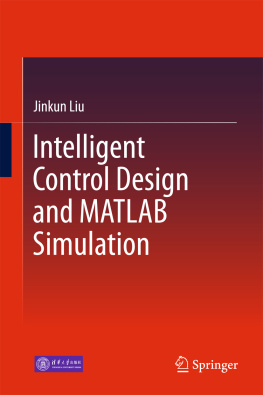Table of Contents
List of Figures
- Figures in 1
- Figures in 2
- Figures in 3
- Figures in 4
- Figures in 5
- Figures in 6
- Figures in 7
- Figures in 8
- Figures in 9
List of Tables
- Tables in 2
- Tables in 3
- Tables in 4
- Tables in 6
- Tables in 7
- Tables in 8
Landmarks
Grid Connected Converters
Modeling, Stability and Control
Hassan Bevrani
University of Kurdistan, Kurdistan, Iran
Toshiji Kato
Doshisha University, Kyoto, Japan
Toshifumi Ise
Osaka University, Osaka, Japan
Kaoru Inoue
Doshisha University, Kyoto, Japan
Table of Contents
Copyright
Elsevier
Radarweg 29, PO Box 211, 1000 AE Amsterdam, Netherlands
The Boulevard, Langford Lane, Kidlington, Oxford OX5 1GB, United Kingdom
50 Hampshire Street, 5th Floor, Cambridge, MA 02139, United States
Copyright 2022 Elsevier Inc. All rights reserved.
No part of this publication may be reproduced or transmitted in any form or by any means, electronic or mechanical, including photocopying, recording, or any information storage and retrieval system, without permission in writing from the publisher. Details on how to seek permission, further information about the Publishers permissions policies and our arrangements with organizations such as the Copyright Clearance Center and the Copyright Licensing Agency, can be found at our website: www.elsevier.com/permissions.
This book and the individual contributions contained in it are protected under copyright by the Publisher (other than as may be noted herein).
Notices
Knowledge and best practice in this field are constantly changing. As new research and experience broaden our understanding, changes in research methods, professional practices, or medical treatment may become necessary.
Practitioners and researchers must always rely on their own experience and knowledge in evaluating and using any information, methods, compounds, or experiments described herein. In using such information or methods they should be mindful of their own safety and the safety of others, including parties for whom they have a professional responsibility.
To the fullest extent of the law, neither the Publisher nor the authors, contributors, or editors, assume any liability for any injury and/or damage to persons or property as a matter of products liability, negligence or otherwise, or from any use or operation of any methods, products, instructions, or ideas contained in the material herein.
ISBN: 978-0-323-99902-1
For information on all Elsevier publications visit our website at https://www.elsevier.com/books-and-journals

Publisher: Charlotte Cockle
Acquisitions Editor: Graham Nisbet
Editorial Project Manager: Aleksandra Packowska
Production Project Manager: Prasanna Kalyanaraman
Cover Designer: Christian J. Bilbow
Typeset by TNQ Technologies
Dedication
Dedicated to our families.
Foreword
The global energy situation in 2022 is under critical pressure and future predictions are saying that a large shift of energy mix is neededbetter today than tomorrow. A main reason is the challenging predictions of a future climate crisis, which includes a global average temperature increase of more than 2, or even higher due to the carbon emission from fossil fuelsif nothing is done on the planet. A major need is to change the fossil fuelbased electricity production to become based on renewables (especially wind and solar), which directly gives a significant reduction in carbon emission, but there is also a need to transform the transportation sector to become electrifiedwhich also will give a very direct and clear reduction of the emission. The transportation sector is fully based on fossil fuel todaybut electrifying ita large carbon emission reduction can be achieved. A third area is to save energy either by using less energy in our daily living or make the conversion processes much more efficient. One example seen in the past has been the classical bulbs, which today all are based on LEDs with an amazing energy reduction. The world will in the future need to be based on electricity instead of fossil fuel and my prediction is that electricity will cover above 60 % of all the global energy consumption achieved within the next 40 years to come.
To realize such energy system, we need to convert electrical power from one stage to anothere.g., from ac to dc or vice versa. This is done by the modern power electronics technology, which has been present for more than 60 years. In the last decades, the most dominant power converter topologies have been the voltage source converterbased systems and they are on a very rapid expansion in many different applications (i.e., wind, solar, storage, EV-chargers, EVs, adjustable speed drives, HVDC power transmission). The voltage-sourced systems can achieve very fast dynamics thanks to the used capacitors and fast switching power devices, high power density, low cost, and they are very scalable in power. Further ondue to the high dynamic ability in the systemthe systems where they are applied into will also become fastand here often large energy savings can be achieved or a high performance. We are seeing millions of such units around in the world and that will soon be billions in the global power system.
This book with the title Grid Connected ConvertersModeling, Stability, and Control by Profs. Hassan Bevrani, Toshiji Kato, Toshifumi Ise, and Kaoru Inoue is addressing this important technology in order to give researchers and industry a unique understanding and propose methods to improve the performance of grid connected converters. This book comprises 9 chapters with Part I discussing Concepts, fundamentals, modeling, and dynamics analysis and a Part II having the title Control synthesis for stabilizing and performance enhancement. This book gives the fundamentals about the grid-connected converters and comes up with many interesting methods on how to analyze the converters connected to the grid. It also improves the performance on them if certain problems are expected to appear.
I enjoyed reading this book where the topics are presented in a new, easy, and understandable wayI hope you enjoy the work too.
Frede Blaabjerg, IEEE fellow
Professor in Power Electronics and Drives
Aalborg University, Denmark
Preface
Increased needs for electrical energy and environmental concerns besides growing attempts to reduce dependency of power generation to fossil fuel resources have caused power grid industries to set an ambitious target of renewable generation. Therefore, the capacity of installed converter-based distributed generators (DGs) and renewable energy sources (RESs) over the world is rapidly growing; and this increases the significance of












